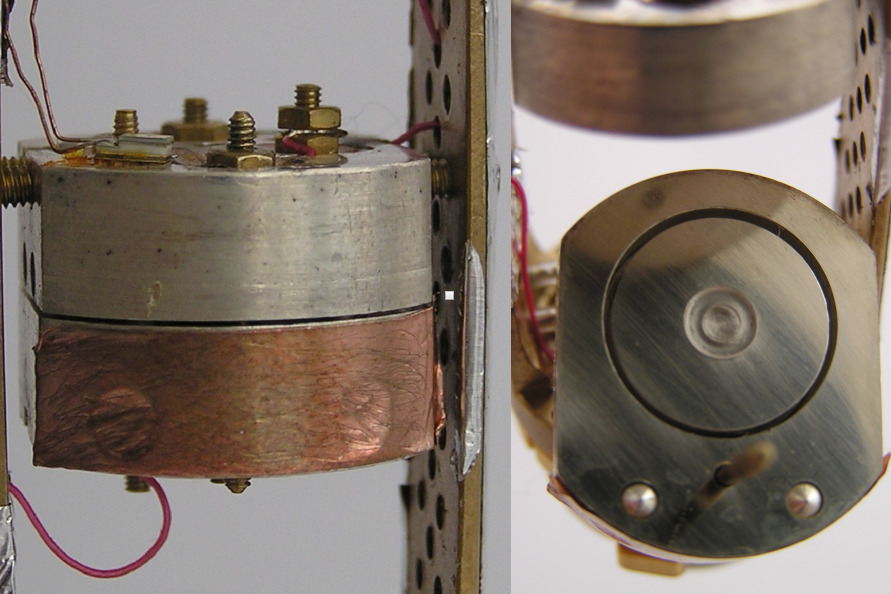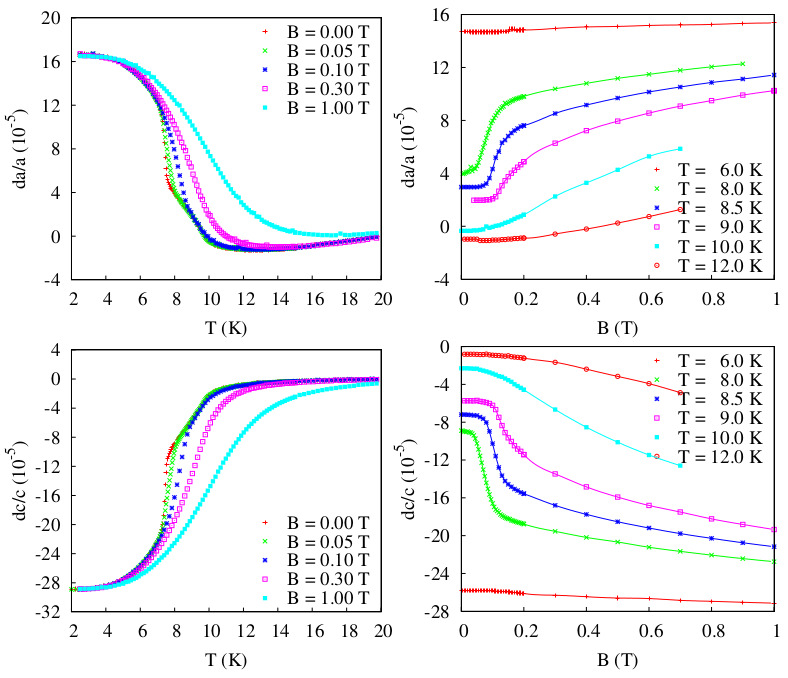
Method description
The measurement of the temperature (thermal expansion) or field (magnetostriction) dependence of the strain tensor is a wide and well-developed area. Generally, the methods of measurement can be divided into two groups - microscopic methods (x-ray in our laboratory) and macroscopic methods (strain-gauge, dilatometer). These methods have various sensitivity and different operational parameters.
Here is the summary of the techniques employed with the MGML infrastructure:
- low temperature x-ray diffraction
- non-contact approach providing direct information about changes in the crystal unit cell
- possibility to measure on the powder sample, bypassing the need for single crystal
- limited resolution and sensitivity
- strain gauge
- suitable for samples of various sizes, a polished plane is necessary for gluing the sensor
- single crystal necessary in order to obtain full tensor
- possibility to measure under pressure
- limited resolution and sensitivity
- capacitance dilatometry
- various sample shapes and sizes
- single crystal necessary in order to obtain full tensor
- excellent sensitivity and resolution
Where to use it?
Thermal expansion method is available in the following cryostats:
Fig. 1: Temperature dependence of the thermal expansion in the vicinity of the double phase transition at different magnetic fields (left). Field dependence of the magnetostriction for low temperatures (right). In all cases the field was applied along the c-axis. For details see Phys. Rev. B 83, 104403.

